Stop Buying These 9 Breads:Here Are 9 Better Choices (According To Dietitians)
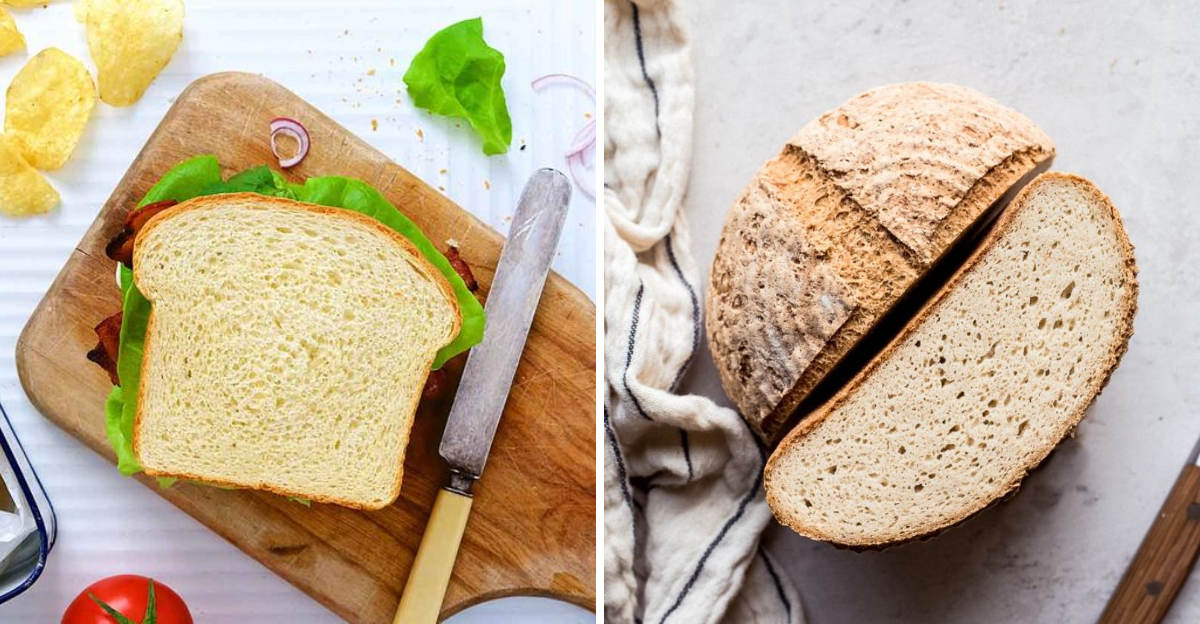
Bread is a staple in many diets, but not all breads are created equal. Some popular choices may not be as healthy as they seem. In this article, we explore nine types of bread you might want to reconsider buying and suggest nine healthier alternatives. Discover how you can make better bread choices that support your health and wellbeing.
1. White Sandwich Bread
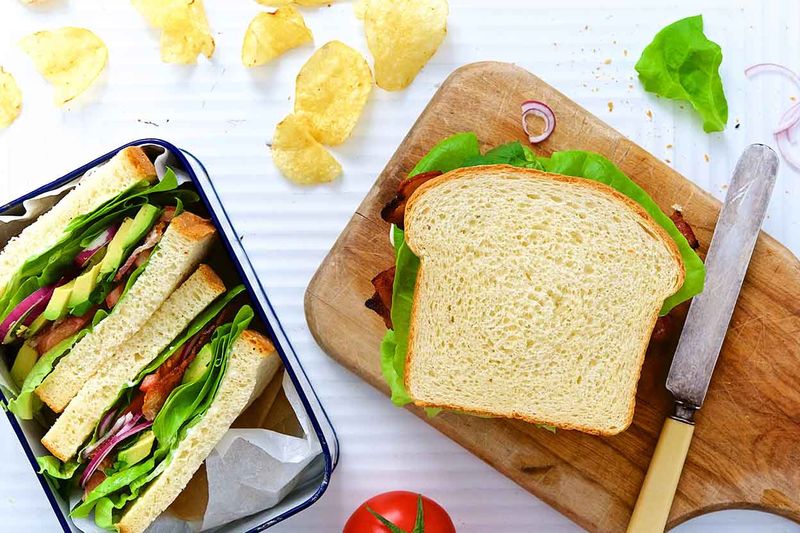
White sandwich bread, a ubiquitous pantry staple, is made primarily from refined flour. Its soft texture and mild flavor make it a popular choice for sandwiches. However, this bread often lacks essential nutrients like fiber, leading to quick spikes in blood sugar levels, followed by inevitable crashes. Such fluctuations can leave you feeling tired and hungry soon after eating. Despite its convenience, white bread offers little in terms of nutritional value, making it a less-than-ideal choice for those seeking a balanced diet. Consider switching to a more nourishing option to sustain your energy throughout the day.
2. “Honey Wheat” Bread
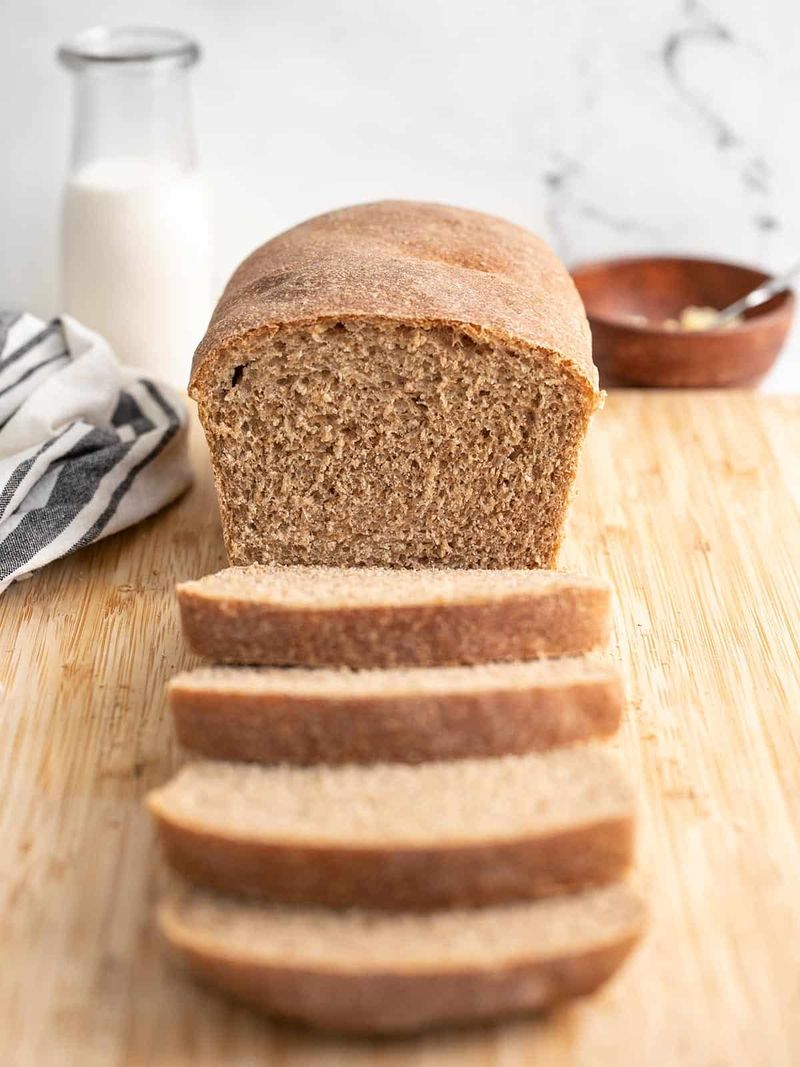
Honey wheat bread often sounds like a healthier choice due to its name, but don’t be fooled. While it may contain some whole wheat, it’s usually made predominantly from white flour with just a hint of wheat. Additionally, many brands add sugar or high-fructose corn syrup, masking the bread’s potential health benefits. This sweet addition can contribute to unnecessary calorie intake, making it more of a sweet treat than a wholesome staple. For those looking for real health benefits, it’s wise to scrutinize the ingredient list and opt for true whole grain versions.
3. Light Bread (Low-Calorie)
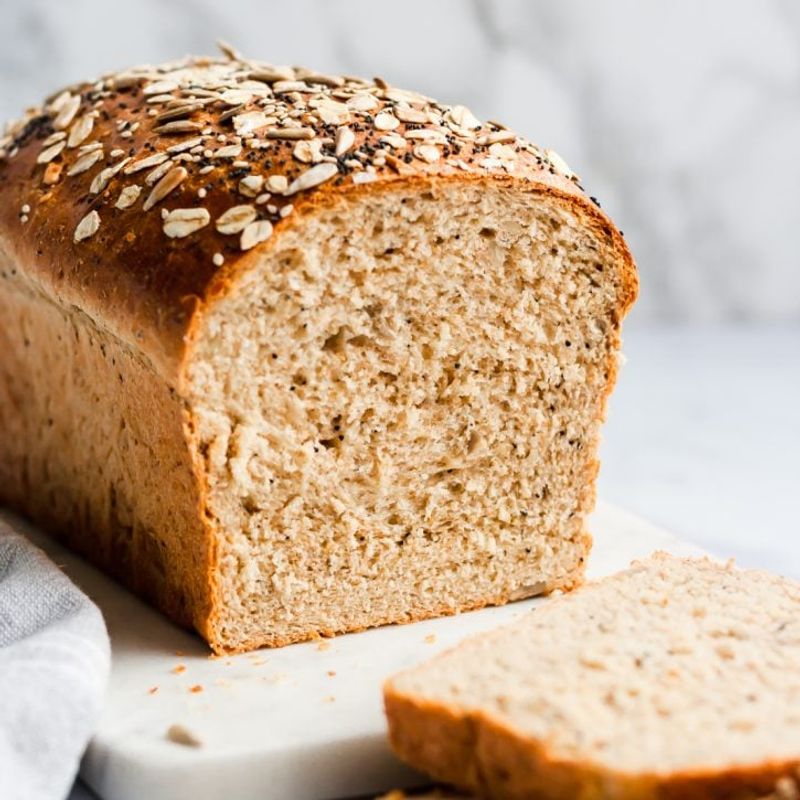
Marketed as a diet-friendly option, light bread is often low in calories yet equally low in nutritional value. Many brands replace calories with artificial sweeteners and additives to maintain flavor, potentially compromising overall health benefits. While it may seem like a good choice for weight control, the lack of fiber and protein in light bread can leave you feeling unsatisfied and hungry soon after. For a more fulfilling and nutritionally sound option, consider whole grain breads that provide natural fiber and nutrients without added chemicals.
4. Potato Bread
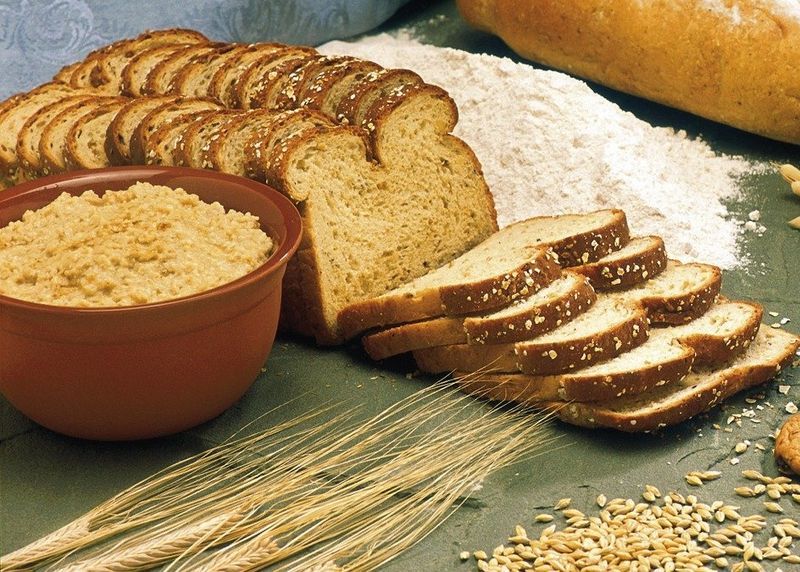
Potato bread, known for its soft texture and slight sweetness, might delight your taste buds but not your health. Although potatoes are nutritious, potato bread is typically high in refined starches, similar to white bread. This composition offers little nutritional advantage and might lead to rapid blood sugar increases. For those desiring a hearty and healthful bread, whole grain varieties offer superior fiber and nutrients. By choosing whole grains, you can enjoy a satisfying bread experience that supports sustained energy and overall wellness.
5. Gluten-Free Bread (Highly Processed Types)
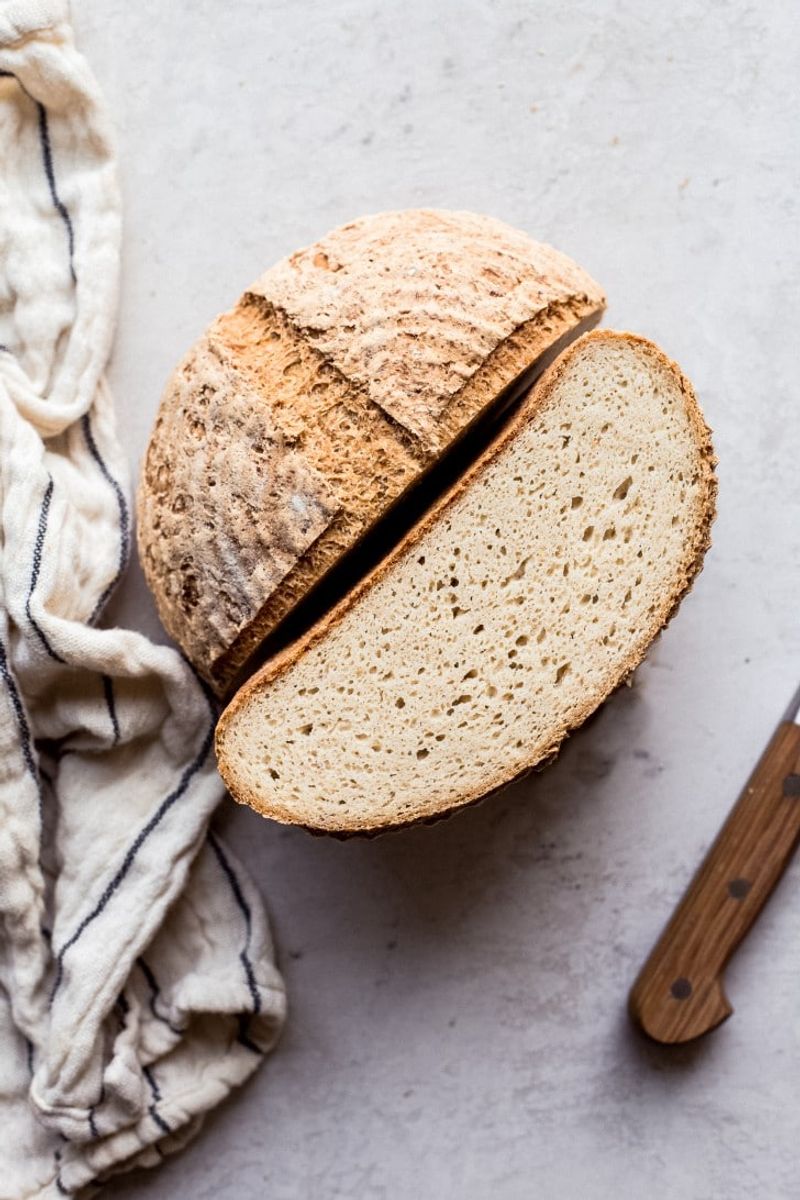
While gluten-free bread is essential for those with celiac disease or gluten sensitivity, many versions are highly processed. These breads often rely on starches like tapioca or rice flour, which are low in fiber, protein, and essential nutrients. Unless enriched, they may not provide the health benefits one might expect. For a more nutritious gluten-free option, look for breads made with whole grains or seeds, which offer better nutritional profiles. Such choices can help maintain a balanced diet without compromising dietary restrictions.
6. White Hamburger Buns
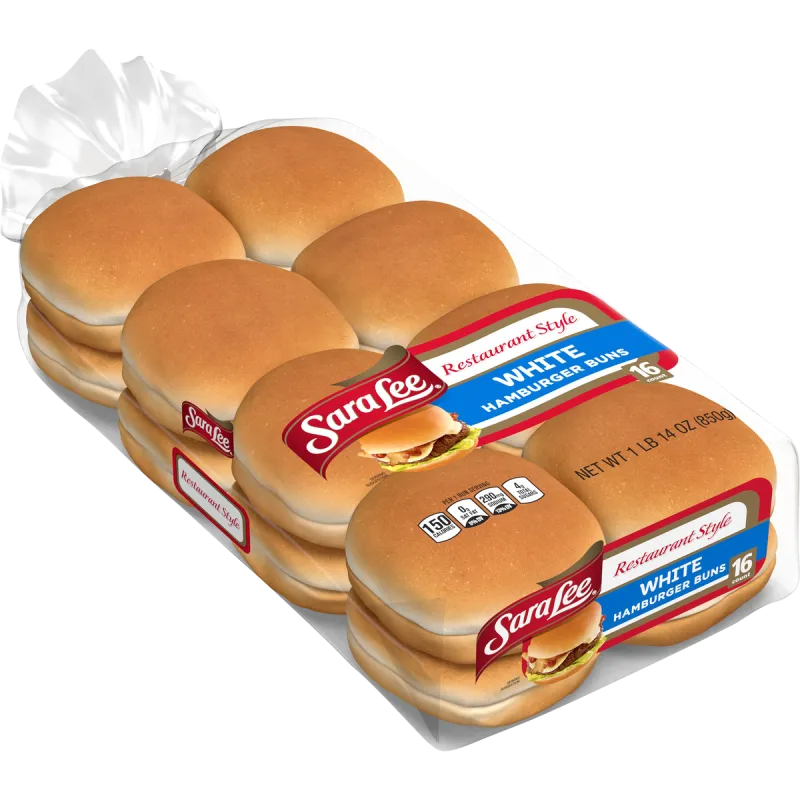
White hamburger buns often accompany barbecues and picnics, serving as a soft and mildly sweet vessel for burgers. However, these buns are typically made from refined white flour, stripped of whole grains and fiber. The result is a quick-digesting carbohydrate that provides little satiety and nutritional value. For a healthier alternative, consider buns made from whole grains or those enriched with seeds, which not only add texture but also nutritional benefits. By making this switch, you can enjoy your favorite grilled meals while supporting your health goals.
7. Cinnamon Raisin Bread (Commercial Brands)
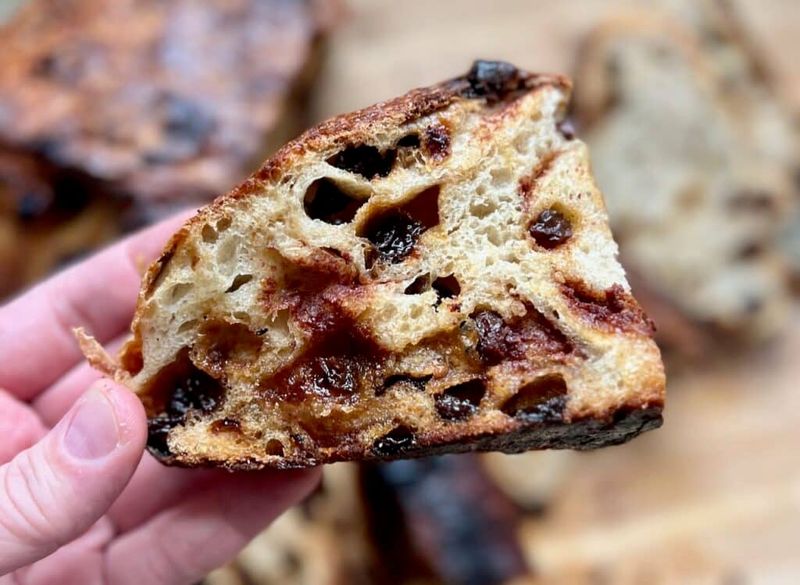
Commercial cinnamon raisin bread captivates with its sweet aroma and soft, chewy texture. However, it often contains high levels of sugar and minimal fiber, making it more akin to a dessert than a nutritious bread. Though raisins and cinnamon offer some benefits, the overall composition can lead to unnecessary sugar intake. For a more balanced option, homemade versions with whole grains and reduced sugar provide the comforting flavors without the excessive sweetness. Embrace a version that prioritizes health along with taste, ensuring a delightful and nutritious treat.
8. Flatbreads Made with Enriched Flour
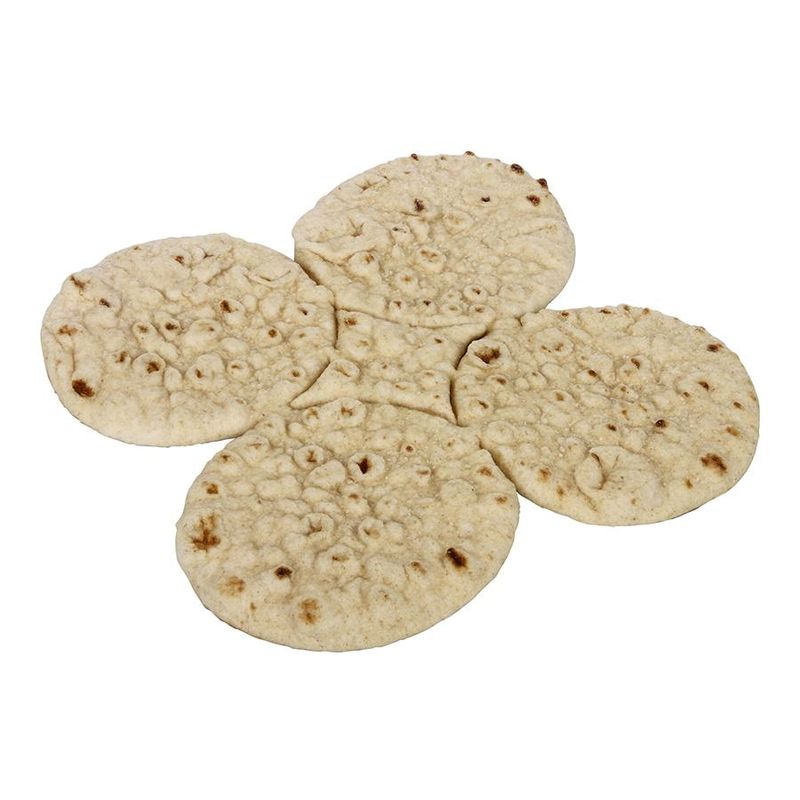
Flatbreads often appear healthier due to their thin form, yet many are made with enriched flour devoid of whole grains. This lack of nutritional content means they may not support a balanced diet as effectively as whole grain options. Despite their versatility and ease of use in various recipes, choosing flatbreads with whole grains can provide essential nutrients and fibers. Enhancing your meals with these nutrient-rich alternatives ensures you still enjoy all the culinary possibilities without sacrificing your health.
9. Frozen Garlic Bread
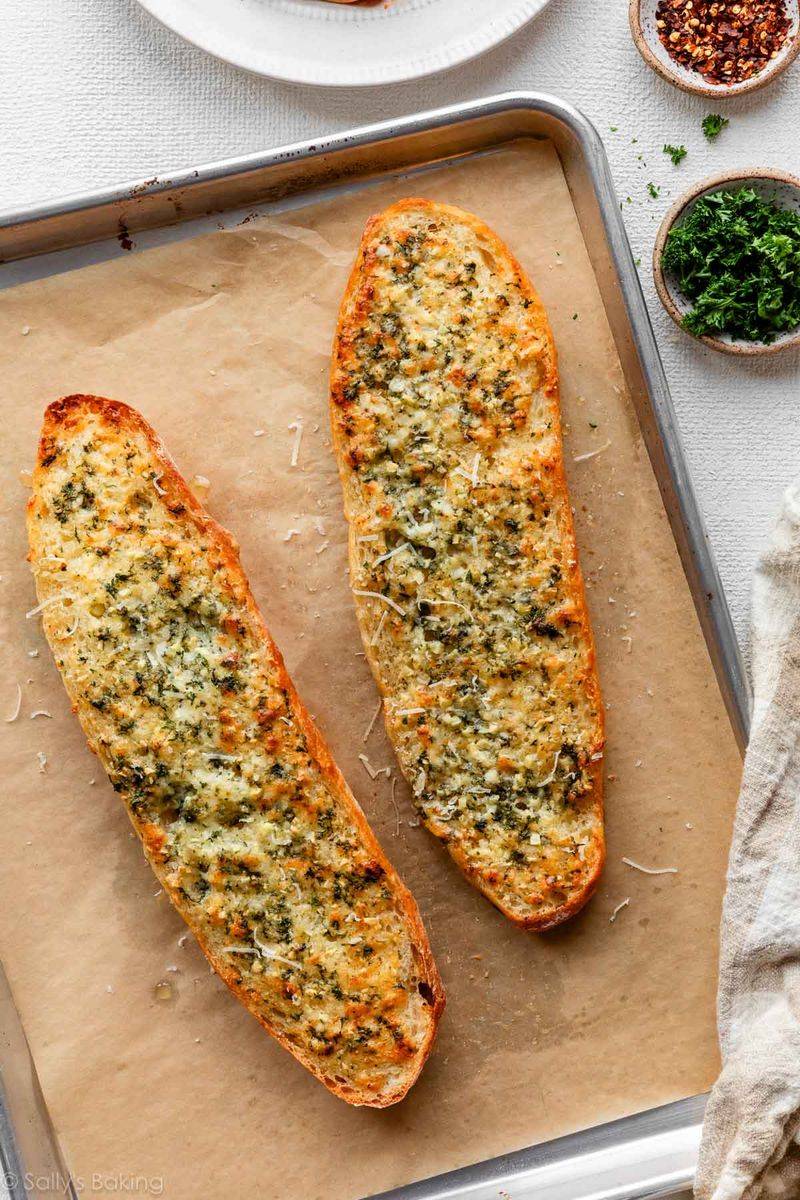
Frozen garlic bread adds a savory touch to meals, but its nutritional profile might surprise you. Typically packed with butter substitutes, excessive salt, and preservatives, this convenient side dish lacks real nutritional value. While delicious, it often contributes to unnecessary calorie and sodium intake. For a healthier choice, homemade garlic bread using whole grain baguettes, fresh garlic, and herbs can offer flavor without the extra additives. This simple swap provides a tasty complement to your meals and supports a balanced diet.
10. Whole Grain Sourdough
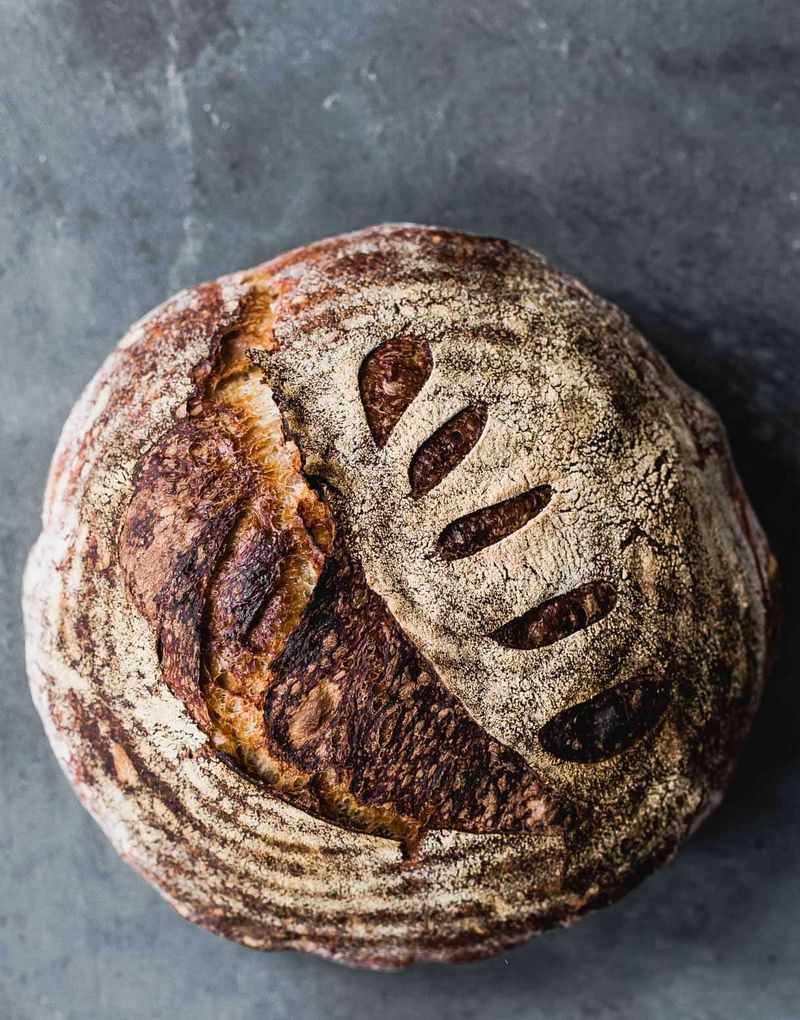
Experience the tangy flavor of whole grain sourdough. Made through a natural fermentation process, it boasts probiotics beneficial for gut health. Its firm crust and soft interior offer a delightful texture contrast. Unlike regular sourdough, this whole grain version delivers extra fiber, keeping you fuller for longer. Enjoy it toasted with avocado or as a hearty sandwich base. Its natural sour taste pairs well with creamy cheeses and fresh vegetables. Did you know? Sourdough’s roots trace back to ancient Egypt! This timeless bread complements modern diets perfectly.
11. Sprouted Grain Bread
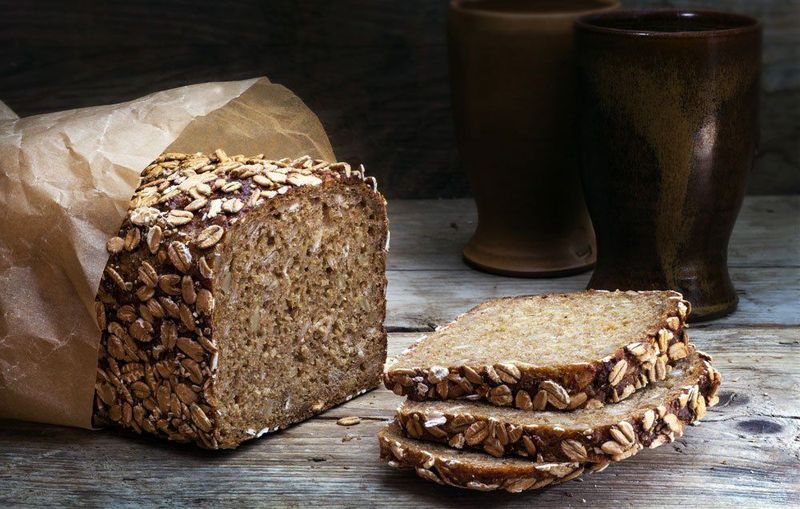
Sprouted grain bread is a nutritional powerhouse. It’s crafted from grains that have begun to sprout, making it rich in vitamins and minerals. This bread is easier to digest compared to its non-sprouted counterparts. Its naturally sweet and nutty flavor is a favorite among health enthusiasts. Sprouted grains enhance protein content, providing a satisfying meal component. Pair it with nut butter for a protein-packed snack. Fun fact: Sprouted grains were a staple in ancient diets, offering a taste of history in every bite. A perfect blend of tradition and nutrition.
12. Rye Bread
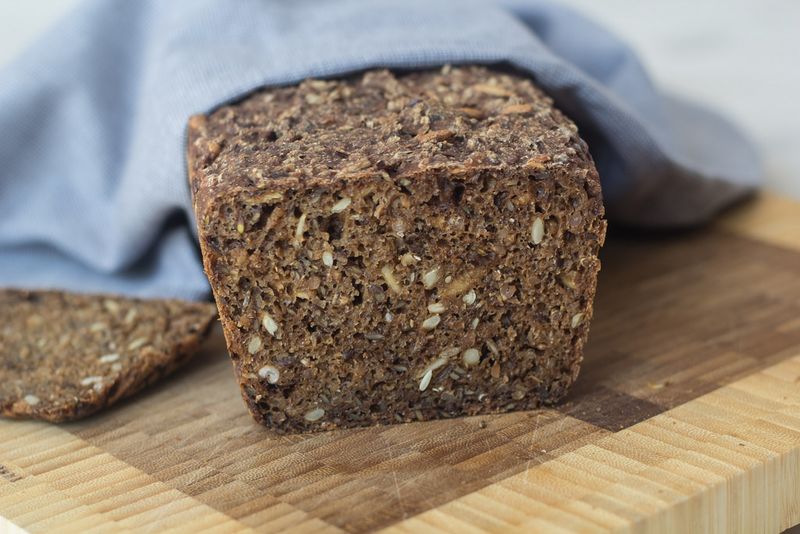
Rye bread offers a distinct, bold flavor that stands out. Its dense texture and dark color are due to the rye flour used, often mixed with seeds for added crunch. This bread is a staple in Scandinavian countries, known for its health benefits. High in fiber, it supports digestive health and stabilizes blood sugar levels. Rye’s strong taste pairs well with smoked salmon or pickled vegetables. Historically, it was a favorite among Vikings. Its robust flavor and health benefits make it a cherished choice worldwide.
13. Ezekiel Bread
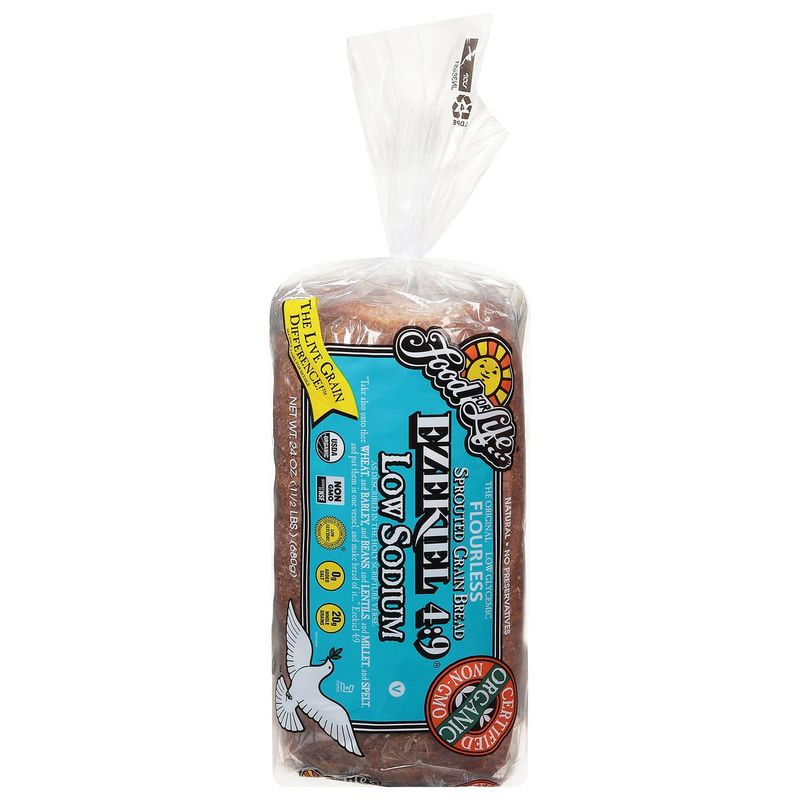
Ezekiel bread is a biblical-inspired bread made from sprouted whole grains and legumes. It combines wheat, barley, beans, lentils, millet, and spelt. This nutrient-dense bread offers a complete protein, rare among bread varieties. Its dense texture and earthy flavor are unique, making it a nutritious alternative to traditional bread. Toast it for breakfast or use it as a sandwich base. The combination of grains and legumes provides sustained energy. Ezekiel bread’s ancient recipe connects modern eaters with historical culinary practices.
14. Multigrain Bread

Multigrain bread features a mix of whole grains and seeds, offering a variety of flavors and textures. Each slice is dense with nutrients, making it a healthy choice for any meal. This bread provides a hearty base for sandwiches, adding a crunch and earthiness. Its combination of grains such as oats, barley, and millet ensures diverse nutritional benefits. Multigrain bread supports heart health and keeps you satiated. Try it with fresh greens and lean proteins for a wholesome lunch. A delicious way to embrace multiple grains.
15. Oat Bread
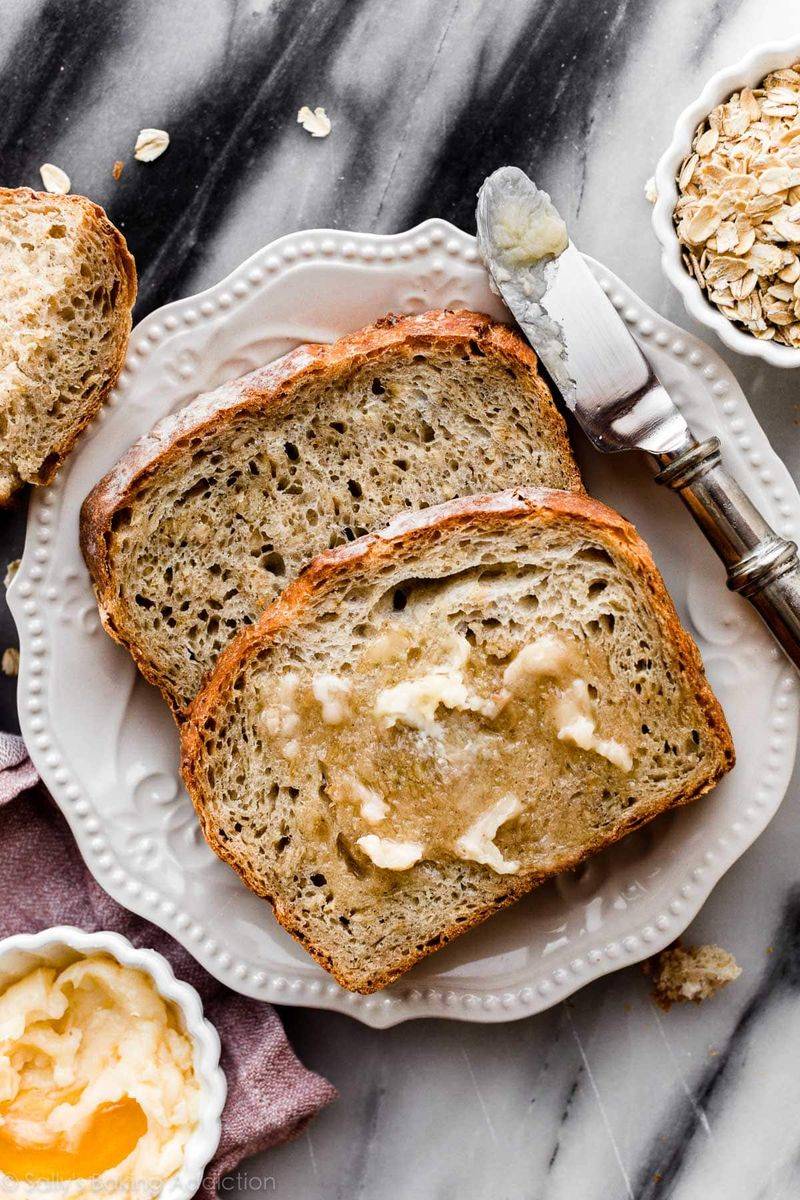
Oat bread combines the goodness of oats with traditional bread-making methods. Known for its mild flavor and tender crumb, it is a favorite breakfast bread. Oats are high in beta-glucans, which can help reduce cholesterol levels. This bread’s soft texture pairs well with sweet or savory toppings. Toasted oat bread with a spread of butter and honey makes for a comforting start to the day. Oats have been a dietary staple for centuries, celebrated for their health benefits. A wholesome addition to your bread selection.
16. Whole Wheat Pita
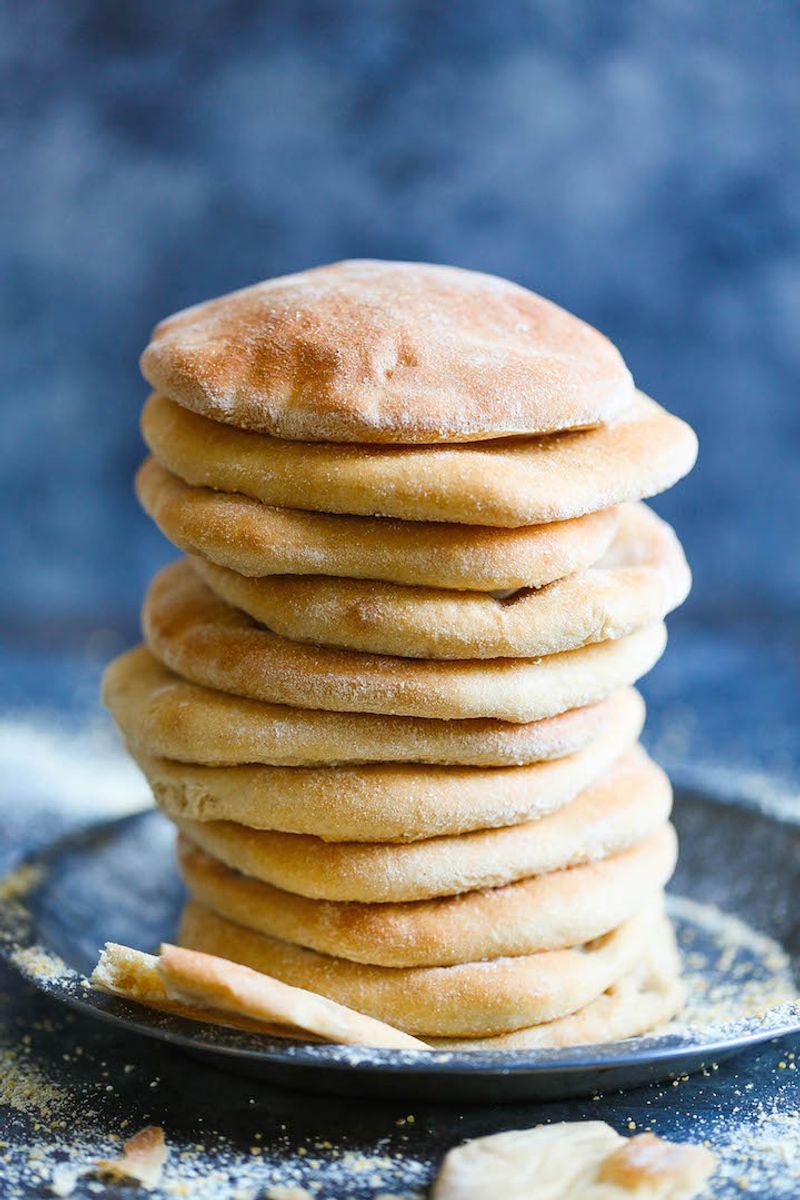
Whole wheat pita is a versatile bread option, perfect for wraps and dips. Its pocket design makes it ideal for stuffing with fresh vegetables and lean meats. Made from whole wheat flour, it offers more fiber and nutrients than white pita. Its soft and chewy texture is a hit at picnics and family gatherings. Use it as a base for mini pizzas or a side with hummus. This Mediterranean staple brings a taste of tradition to modern meals, enhancing both flavor and nutrition.
17. Chia Seed Bread
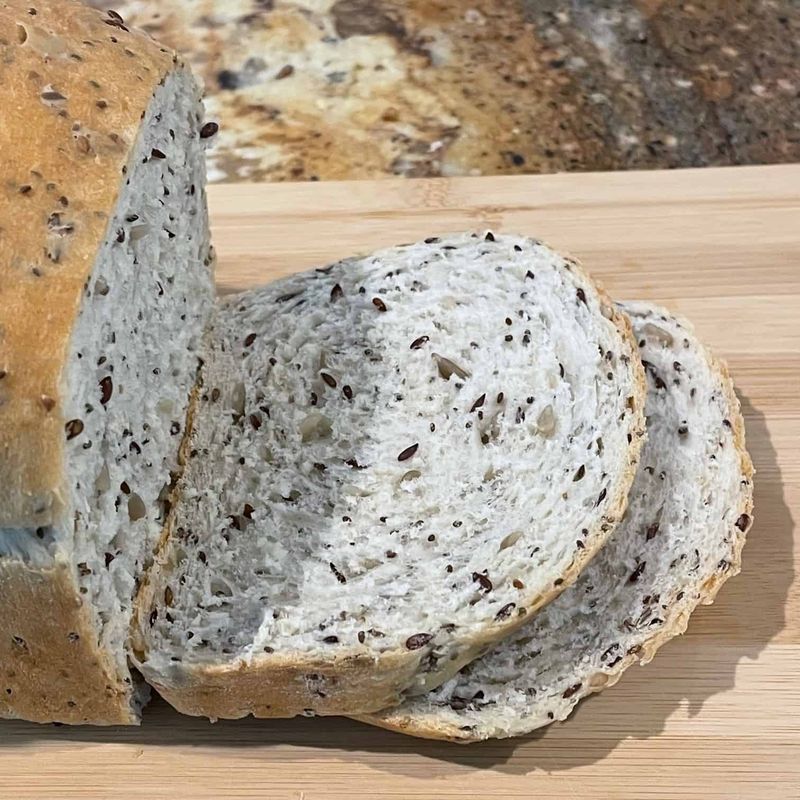
Chia seed bread is a contemporary bread choice packed with benefits. Chia seeds are rich in omega-3 fatty acids, promoting heart health. This bread’s slightly nutty flavor and moist texture make it unique. Perfect for breakfast or as a snack, it’s delicious with avocado or almond butter. Chia seeds absorb water, adding a gel-like quality that keeps the bread moist. A trendy choice among health aficionados, it combines modern dietary preferences with traditional baking. Experience the fusion of health and taste in every slice.
18. Spelt Bread
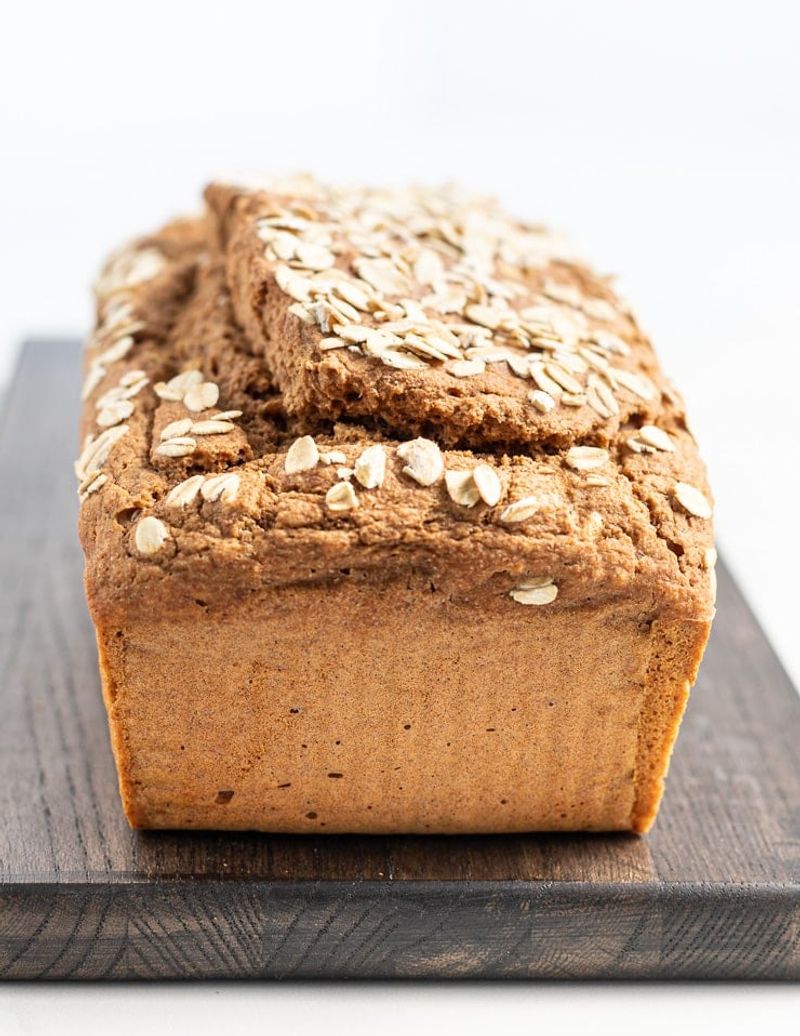
Spelt bread offers a nutty flavor and light texture. Spelt, an ancient grain, is easier to digest than modern wheat. Its unique taste and nutritional profile make it a desirable choice. High in fiber and protein, spelt supports a balanced diet. This bread is perfect for toast or sandwiches, providing a wholesome base. Pair it with fresh vegetables and spreads for a nutritious meal. Spelt’s history dates back to ancient civilizations, offering a link to traditional eating habits. A delicious way to enjoy ancient grains.
